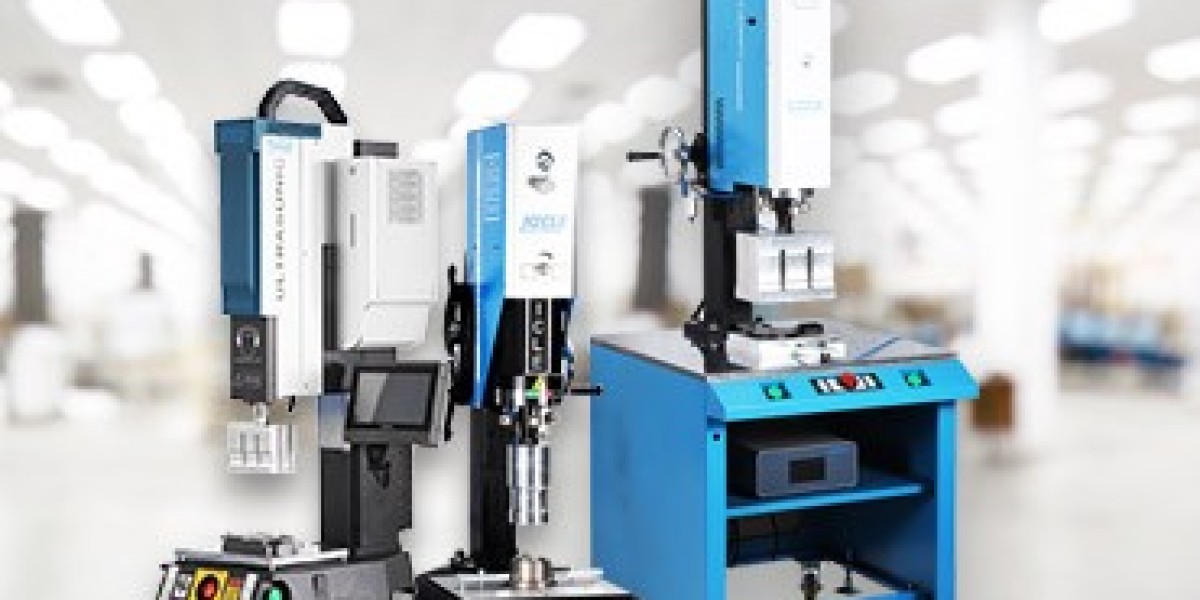As the demand for eco-friendly and sustainable products continues to rise, toy manufacturers are seeking innovative methods to reduce their environmental impact while ensuring their products meet the highest safety and quality standards. One such innovation that is making waves in the toy industry is ultrasonic welding. This advanced technology offers numerous benefits, especially when used in the production of eco-friendly and biodegradable toys made from sustainable materials.
This article explores how ultrasonic plastic welding technology can be utilised in the production of biodegradable toys, the benefits it brings to both manufacturers and consumers, and how it plays a crucial role in the broader push towards sustainability in the toy industry.
What is Ultrasonic Welding?
Ultrasonic welding is a process that uses high-frequency sound waves to create friction between plastic components, causing them to melt and bond without the need for adhesives, solvents, or heat. The process generates heat by converting the ultrasonic vibrations into kinetic energy, which is then transferred to the interface between the parts being joined. The result is a clean, strong, and durable bond.
This technique is highly effective for joining thermoplastics, including biodegradable and eco-friendly plastics, which can sometimes be challenging to bond using traditional methods such as adhesives or mechanical fasteners. As such, ultrasonic welding has become increasingly popular in the production of toys and other products where safety, durability, and environmental impact are top priorities.
The Shift Towards Eco-Friendly and Biodegradable Plastics
The toy industry has long faced criticism for its reliance on plastic materials, many of which are not biodegradable and contribute to the growing issue of plastic pollution. As consumers become more environmentally conscious, toy manufacturers are under pressure to embrace sustainable practices and reduce their reliance on non-biodegradable plastics.
Biodegradable plastics, such as polylactic acid (PLA), polyhydroxyalkanoates (PHA), and starch-based plastics, are derived from renewable resources and break down more quickly in the environment compared to traditional petroleum-based plastics. These materials offer a promising alternative to the conventional plastics used in toy production, as they help to reduce long-term environmental harm.
However, working with these eco-friendly materials presents its own set of challenges, particularly when it comes to joining components. Biodegradable plastics may have different properties than traditional plastics, such as lower melting points or reduced chemical resistance, which can complicate the joining process. Ultrasonic welding solves this problem by providing a highly precise and controlled method for creating strong bonds without the need for harsh chemicals or adhesives, making it the ideal technology for producing biodegradable toys.
Benefits of Ultrasonic Welding for Eco-Friendly and Biodegradable Toys
1. No Need for Toxic Adhesives or Chemicals
One of the most significant advantages of ultrasonic welding is that it eliminates the need for adhesives, solvents, or other chemical-based bonding agents. Traditional methods of joining plastic parts often require the use of toxic chemicals, which can be harmful both to the environment and to the workers involved in production. By using ultrasonic welding, toy manufacturers can create durable and secure bonds without introducing any potentially harmful substances into their products. This is especially important when working with eco-friendly materials, as it ensures the final product remains free of toxic residues.
2. Energy-Efficient Process
Ultrasonic welding is an energy-efficient process compared to other traditional methods like heat sealing or injection moulding. The process generates heat only at the interface of the parts being joined, which significantly reduces the amount of energy required. In addition, the process is rapid, allowing for faster production times and reduced energy consumption overall. By using ultrasonic welding, toy manufacturers can lower their carbon footprint and contribute to the broader goal of reducing energy use in manufacturing.
3. Reduced Waste and Better Material Utilisation
Traditional plastic welding methods can result in significant material waste due to the need for extra adhesives, fasteners, or excess plastic. In contrast, ultrasonic welding is highly precise, allowing for cleaner, more efficient joins and less wasted material. For eco-friendly toys, which are often made from expensive biodegradable plastics, this improved material utilisation can result in cost savings and a reduction in the environmental impact of production.
4. Stronger, More Durable Joints
One of the challenges when working with biodegradable plastics is ensuring that the joints between components are strong enough to withstand regular use. Traditional adhesives may not provide the same level of strength as ultrasonic welding, which produces bonds that are as strong—if not stronger—than the base material itself. The result is a toy that is more durable and safer for children, with fewer concerns about parts breaking or becoming detached during play.
5. Precision and Control
Ultrasonic welding provides a high degree of precision in the joining process. The vibrations used to create the bond can be finely tuned to ensure the correct amount of heat is generated for the material being used. This level of control ensures that biodegradable plastics, which may have different thermal properties, are processed correctly without risking damage or weak joints. The precise nature of the process also allows manufacturers to produce complex designs with minimal distortion, making it an ideal choice for toys with intricate features.
Applications of Ultrasonic Welding in Biodegradable Toy Production
Ultrasonic welding can be used in a variety of ways in the production of biodegradable toys. Here are some common applications:
1. Joining Toy Parts
Many toys are made up of multiple plastic components that need to be securely joined together. Ultrasonic welding is particularly useful for joining parts like limbs, heads, or accessories in action figures, dolls, or building toys. Since no adhesives are required, the process ensures that these joints are strong and long-lasting, without the need for toxic substances.
2. Packaging and Assembly of Toy Products
In addition to assembling toy components, ultrasonic welding can be used for packaging and final assembly. For example, biodegradable plastic packaging can be welded using ultrasonic technology, ensuring the packaging is strong yet eco-friendly. This method helps reduce the environmental impact of packaging materials, aligning with the overall goal of creating more sustainable toys.
3. Incorporating Smart Features
As toys become more technologically advanced, manufacturers are incorporating features such as electronics or interactive components into their designs. Ultrasonic welding is ideal for joining plastic housings for these components, as it ensures a secure seal without the need for screws or adhesives. This is particularly beneficial in the production of eco-friendly toys that integrate new technology but still maintain their sustainability.
Examples of Companies Using Ultrasonic Welding for Eco-Friendly Toys
Several companies have already begun integrating ultrasonic welding into their production processes for eco-friendly and biodegradable toys.
Green Toys Inc. is a toy manufacturer known for using recycled plastic in its products. While they mainly use recycled materials, the company is also exploring biodegradable alternatives to reduce their environmental impact even further. Ultrasonic welding is a key technology for joining the plastic parts of their toys, ensuring they meet the company’s high sustainability standards.
Lanco Toys manufactures eco-friendly rubber toys using natural rubber, which is biodegradable and free of toxic chemicals. Ultrasonic welding is used to ensure secure joins in their rubber toys without the need for harmful adhesives or chemicals.
Bannor Toys produces wooden and eco-friendly plastic toys for children. The company focuses on creating sustainable, non-toxic toys, and ultrasonic welding is part of their approach to ensuring high-quality, safe products.
The Future of Ultrasonic Welding in Eco-Friendly Toy Production
As the demand for eco-friendly and biodegradable toys continues to grow, ultrasonic welding will likely play an even larger role in the industry. Not only does the technology offer advantages in terms of precision and efficiency, but it also aligns with the sustainability goals of toy manufacturers. The ability to create strong, durable, and non-toxic joints in biodegradable plastics ensures that these products can stand up to the rigours of everyday play while minimising their environmental impact.
With the increasing shift toward sustainability in the toy industry, ultrasonic welding is poised to be a key technology in the production of environmentally responsible toys. Manufacturers are already recognising the potential of this technology, and as the demand for eco-friendly products rises, the role of ultrasonic welding will continue to expand.
Conclusion
Ultrasonic welding represents a significant advancement in the production of eco-friendly and biodegradable toys. Its ability to join components without the need for toxic adhesives or chemicals makes it the ideal technology for companies looking to reduce their environmental impact and create safe, durable toys. As the toy industry moves towards more sustainable practices, ultrasonic welding will be a crucial part of ensuring that the toys children play with are not only fun and safe but also contribute to a greener, more sustainable future.
By adopting this innovative technology, toy manufacturers can achieve greater material efficiency, reduce waste, and improve the overall safety and durability of their products. Ultimately, ultrasonic welding is helping pave the way for a more sustainable and eco-conscious toy industry.









